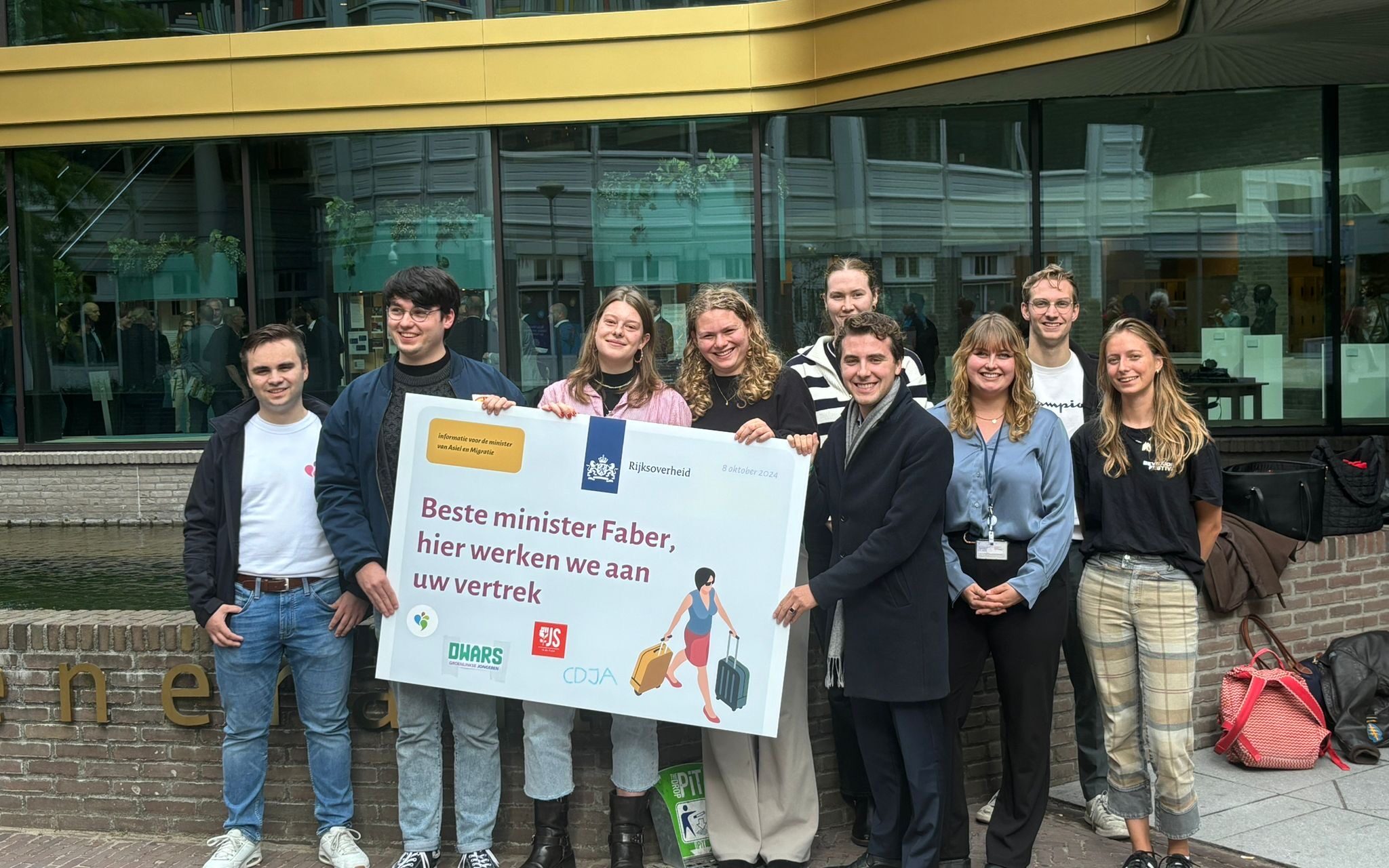Statement DWARS on election defeat GroenLinks: "Let this be a wake-up call for GroenLinks"
18 March 2021The election result of our parent party GroenLinks was an incredibly deep disappointment for all of us. A halving in seats compared to 2017 is hugely painful. However, at DWARS, GroenLinkse Youth, we cannot say we were very surprised by this outcome. Over the past few months, we saw GroenLinks slipping steadily in the polls. While the corona crisis and general vacillation on the left play a part, DWARS also notes some criticisms at GroenLinks itself that cannot go unmentioned.
The campaign mainly lacked a strong narrative. We see a major cause of this in the overly strong will to govern. In an attempt to be taken seriously as a potential formation partner, GroenLinks increasingly started dancing to the tune of the largest parties. Concrete plans increasingly came to the fore, while the ideals behind those plans increasingly faded into the background. Although pass-throughs can be useful to overcome reproaches from the right, they were mainly used to attack the right. In doing so, GroenLinks undermined its own potential to offer a serious alternative to the status quo. Its more moderate image ironically led to its chances of co-ruling significantly shrinking, as it caused idealistic voters to drop out and moderate voters to then switch to D66 for strategic reasons.
In addition, GroenLinks was guided not only by the right, but also by all kinds of voter surveys. In doing so, GroenLinks traded its leading role for a reactive campaign. Sybren Kooistra, the brains behind the 2017 campaign, describes in a blog from last January how setting the agenda is the key to a good campaign. Moreover, a progressive party in particular is expected not to blindly rely on what voters want to hear, but rather determine what progressive voters should think is important.
Perhaps that was also the thinking behind making the climate issue central to the campaign. After all, those voter surveys showed that this is the most important voting motive for GroenLinks voters. However, GroenLinks was barely distinguishable on this theme in the campaign from other parties profiling on it, such as the Party for the Animals and D66. This is where GroenLinks missed the opportunity to make a story with its unique combination of green with leftist and progressive ideals. After all, the big issues of our time, such as the climate problem, increasing socio-economic inequality and institutional racism, are inextricably linked and call for an intersectional approach in solving them. GroenLinks is thus the chosen party to connect these issues in a plea for systemic change. Especially now that we are also facing the corona crisis, the question of who will lead us sustainably (green, but also structurally!) out of the crisis into a better world is more pressing than ever.
However, it was precisely GroenLinks's target group that did not feel appealed by GroenLinks's more realistic, calculating and not very intersectional direction. Indeed, this target group comprises the new generation of idealistic young people under 30, who are ready to take to the streets and fight for the climate, against the loan system and against racism. They are kindred spirits of the US democratic-socialist movement behind Alexandria Ocasio-Cortez and Bernie Sanders, who, unlike GroenLinks, did build a broad movement through a big and idealistic narrative. Especially among the youngest group of young people, we see that they are always a tad more radical and idealistic than the generation before them. They are the most important pond from which GroenLinks has to fish new voters.
Nor did this target group feel drawn to the embodiment of this course, the once inspired and visionary party leader of 2017. However ambitious Jesse Klaver showed himself to be in government, this course does not suit him as well. Here, the stereotypical tragedy of the young idealist who becomes more realistic and right-wing as he gets older seems to be playing out before our eyes. We already know his constructive attitude from GroenLinks in opposition, but at campaign time this does not fit well with a party that wants to challenge power, nor with the urgency of the climate crisis that was precisely so central to GroenLinks's campaign. Even on topical issues such as the rise of the far right and fascism, a connecting tone is inappropriate. Thus, Klaver was getting further and further away from his party's idealistic and activist DNA. However, again, voter surveys show that the GroenLinks voter prefers a positive tone to fierceness and so it stuck to flower-and-beetle rhetoric.
In our view, the campaign illustrates a deeper problem within the party. For some time, noises about the campaign, but also about the lack of renewal of the party leadership and the lack of diversity in key positions within the party, had been heard widely within the party. Also NRC paints a picture of a select group of confidants in the party leadership and in the shell around it. This can create an echo chamber effect and leave less room for innovative ideas or critical voices to penetrate to the top. If we want to understand the course of the campaign, we must also take a critical look at how power is distributed within the party and what the democratic basis for this is.
DWARS sees that at its core, the party's ideals are still sound. This was also expressed nicely in the election manifesto. This makes the election loss extra sad. At the same time, it makes us combative to work even harder for our shared ideals. Let this also be a wake-up call are. DWARS calls on GroenLinks to show the necessary self-reflection and consider what is needed to recover from this defeat. DWARS is happy to think about the direction GroenLinks should take from now on. After all, that is what GroenLinks's youth party is for.
Sabine Scharwachter (president DWARS, GroenLinkse Youth)

